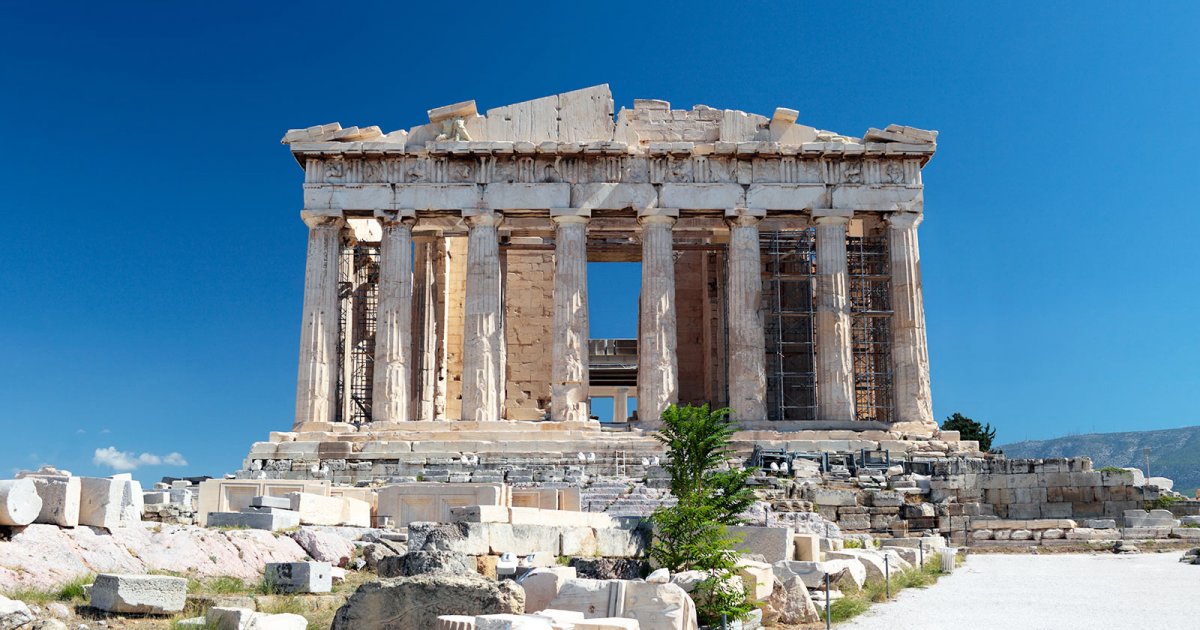ACROPOLIS, Parthenon Second Part
 Language: English / USA
Language: English / USA
Despite its huge dimensions, the Parthenon appears perfectly proportioned, giving a sense of serene and magnificent power and balance. To obtain this effect, Ictinus adopted a number of strategies you might find surprising: the base is slightly higher at the center than at the sides, so as not to give the impression of buckling under the weight of the temple. The columns also tilt slightly inwards, otherwise at a distance it would look as if they were protruding from the exterior. At the same time, they are slightly convex so they do not appear too narrow. These optical corrections are barely perceptible, but necessary to harmonize the appearance of the monument to the human eye. As you can see, every aspect has been considered in great detail to ensure the temple looks perfect.
The most glorious element of the Parthenon, however, were the sculptures by Phidias, one of the most famous sculptors of all time and a personal friend of Pericles. On the two pediments were two magnificent groups of colored statues glorifying the birth of Athena and her triumph over Poseidon. Inside the temple was the colossal statue of the goddess, glimmering with gold and shrouded in a mysterious atmosphere. On the horizontal structure supporting the roof, there were 92 tablets of stone sculpted with scenes of myths and episodes of warfare.
As you can see, the naos, or inner chamber, that housed the statue of Athena has all but disappeared. Along the wall was an ornamental frieze depicting the solemn procession that took place during the most important religious festival of ancient Athens.
Many of these sculptures can be admired in the Acropolis Museum, but if you want to see the magnificent original pediments, you’ll need to take a trip to the British Museum in London!
An interesting fact: Pericles, the Athenian politician who ordered the building of the monuments of the Acropolis, was considered a tyrant by many of his fellow citizens. Since they dared not attack him directly, his adversaries targeted his protégé Phidias, accusing him of stealing part of the gold that was to be used for the statue of Athena. Phidias successfully defended himself from these accusations, but he was then accused of profanity for depicting himself and Pericles on the gigantic shield of the statue, and the tremendously talented sculptor was thrown into prison, where he died, perhaps from poisoning.



